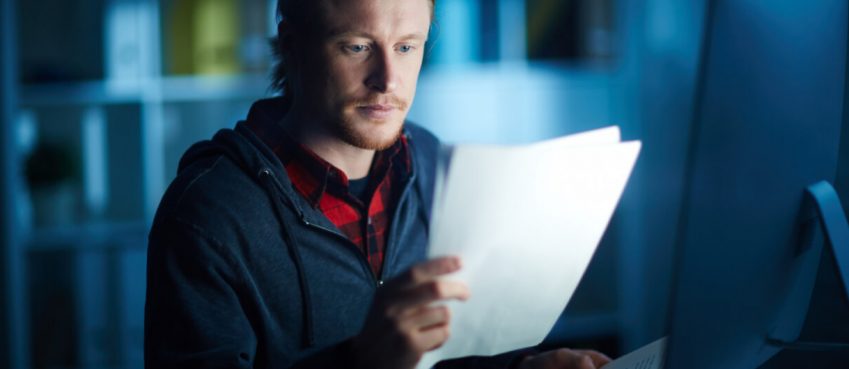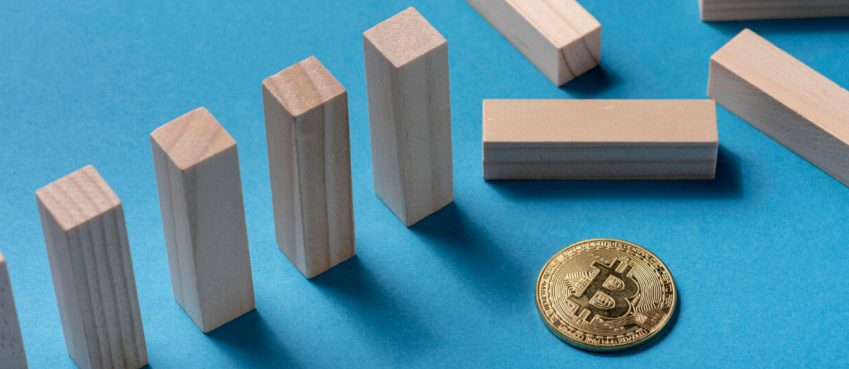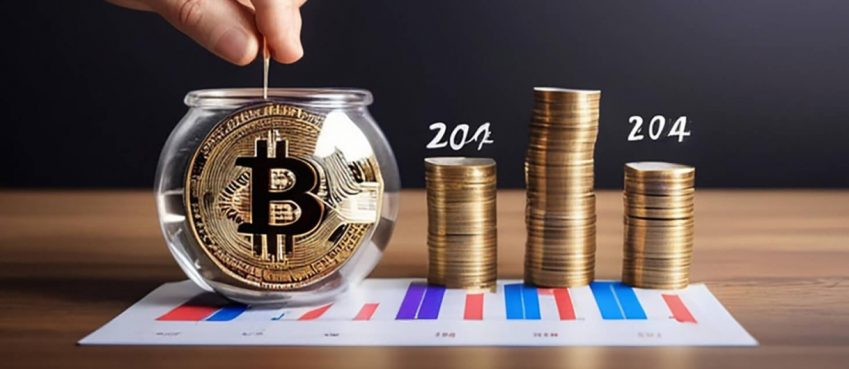
What is Blockchain
Blockchain, We can say a mixture of Block and chain. Blockchain is a rising list of records. That is linked using cryptography. Each block contains a cryptographic hash of the past block, a timestamp, and transaction data. By design, a blockchain is obstructive to the modification of the data.
“Do you know that around 800 million people are currently vulnerable to many life-threatening risks like floods, droughts, hurricanes, heat waves, sea-level rise, and extreme weather events?”
All of these issues put our planet at great risk. Many species are going extinct. The land and oceans are suffocating. And the lives around us are at great stake, all because of our actions like deforestation, excessive carbon emissions, pollution, etc.
At the same time, we also see the convergence of our technological, physical, and biological realms. Technologies like the Internet of Things, artificial intelligence, blockchain, virtual reality, and mobile app development are redefining our economies, lifestyles, values, and opportunities for the planet dwellers.
So, it’s high time to harness these technologies to address environmental issues and remodel the way we manage our shared global environment. In this article, we are focusing on the potential of blockchain to mitigate many existing and emerging environmental challenges.
Blockchain For A Better Planet
Before we dive into the main topic, let’s see some of the defining qualities of blockchain and how they can impact environmental sustainability.
- Decentralization – Peer to peer system with no intermediate channel to manage the data
- Immutable records – The data stored in a blockchain is unalterable
- Traceability – All public records are entirely traceable from inception to expiry.
- Equity – Equal treatments in regulations, requirements, and distributions
These qualities of blockchain come in handy in multiple ways in sustainable development. They help reduce fraud and tampering, reinforce democracy and transparency, and encourage people to adopt environmentally friendly practices.
Currently, six environmental challenges need imminent proactive action. They are climate change, biodiversity loss, natural disasters, ocean-health deterioration, air pollution, and water scarcity. So, let’s see how blockchain can mitigate these challenges
-
Sustainable Supply Chains
Have you ever wondered if the products we buy from stores are produced in environmentally friendly ways?. Even if you did, it’s impractical to get and verify such information. The products go through many hands before they reach us. So who knows how they are made and processed?
But, a blockchain-based supply chain system provides complete traceability of products from source to store with immutable records. For example, let’s say we are buying organic food. So this system allows us to check if it’s produced organically and ethically, check where they dump the waste, monitor its complete life cycle and movements, and many more.
Not only does this help us make better-informed decisions, but this transparency can also put an end to many illegal and unethical practices in supply chain management such as illegal fishing, illicit deposition of waste, etc.
-
Saving Energy And Water
“Around 1.5 billion people on earth have no access to clean water and electricity.”
It’s disturbing to even think about such a scenario, right? Well, it’s our reality.
This adversity is partly due to inefficiencies in the current resource distribution system. Many factors such as transportation loss, the disparity in distributions, and illegal extraction contribute to this inefficiency.
Decentralized resource management is the ultimate solution to this. It connects the users directly to the source, without the need for intermediaries.
A decentralized energy grid can direct the energy from where it’s produced to where it’s needed with no tampering and leakage along the way. Similarly, a decentralized water distribution system enables us to check if the water is distributed as scheduled, check its quantity and quality, reinforce water conservation, and detect illegal extraction or water tampering.
-
Reducing Carbon And Greenhouse Gases
“Today’s greenhouse gas levels may be the highest in 3 million years.”
Carbon and greenhouse gases are the main culprits behind current environmental challenges such as climate change, chemical pollution, and ozone depletion, and so on.
Although there are many rules and regulations to control these emissions, few people follow it strictly. So, companies can lie about their allowed rate of emissions and cause to aggravate many environmental risks.
Blockchain can eliminate all these discrepancies by bolstering traceable and immutable records of carbon credit transactions such as carbon footprint and carbon tax. All of these will also encourage companies to restructure their business model to meet sustainability demands.
-
Protecting Biodiversity
“One in five species on earth is on the verge of extinction.”
Earth’s biological assets are facing unprecedented threats due to the violation of many planetary conditions. Besides many species, we also lost nearly 1 million hectares of coastal ecosystems over the past years.
Blockchain’s applications can minimize these risks to a great extent. For instance, we can reinforce many environmental laws such as forestry laws, fishing laws, hunting regulations, and pollution control laws and ensure that they are strictly followed.
We can also monitor the pillars of an ecosystem such as lands, oceans, forests, resources, and species living in these habitats in a geospatial digital ledger. This way, we can spot and eliminate any illegal activities that can affect the healthy conservation of diverse species and habitats.
-
Controlling Pollution
“Around 7 million people die annually from exposure to air pollution.”
Estimates predict that by 2050, there will be a more plastic waste in the ocean than fish. Blockchain can encourage people and organizations to practice the right way of valuing and treating the materials and natural resources.
For example, we can transfer cryptocurrency credits to individuals and companies as a reward for following sustainable practices such as collecting plastic from land and oceans, recycling materials, controlling smoke emissions, and saving water. Plastic Bank and RecycleToCoin are some platforms that do precisely that.
-
Proactive Disaster Management
“In 2018, the number of natural disasters was three times more than it was in 1980.”
The scale and frequency of natural disasters are increasing day by day, partly due to climate change. Natural disasters are often unpreventable. The only thing we can do is prepare for foreseeable natural disasters and manage real-time responses to repair their consequences.
Blockchain can be very handy in these situations. For example, financing and co-ordinating immediate support and supplies to people in need in the affected areas. By connecting the suppliers and those who deliver the supplies with blockchain, we can track the movement of supplies to ensure that they are delivered at scheduled times in specific locations.
Also read: 10 Best AI Text To Speech Generator (October 2024)
Final Thoughts
There is a great deal of incentive for sustainability initiatives in the technology world. IBM’s “call for code” initiative and Amazonia third way initiative called “Earth bank of codes” are a few examples of that. Mobile app development also has a commendable role in popularizing environmental practices. Blockchain-powered mobile apps like foodtrax, RecycleToCoin, EcoChain, SolarCoin are helping people embrace environmental practices. So, Let’s just hope that these opportunities will encourage individuals, organizations, policymakers, and government frameworks to contribute to a better planet for future generations.
Top 10 News
-
01
What Are Top 10 Blood Thinners To Minimize Heart Disease?
Wednesday January 22, 2025
-
02
10 Top-Rated AI Hugging Video Generator (Turn Images Into Ki...
Monday December 23, 2024
-
03
10 Top-Rated Face Swap AI Tools (Swap Photo & Video Ins...
Friday December 20, 2024
-
04
10 Exciting iPhone 16 Features You Can Try Right Now
Tuesday November 19, 2024
-
05
10 Best Anatomy Apps For Physiologist Beginners
Tuesday November 12, 2024
-
06
Top 10 Websites And Apps Like Thumbtack
Tuesday November 5, 2024
-
07
Top 10 Sites Like Omegle That Offer Random Video Chat
Monday October 21, 2024
-
08
Entrepreneurial Ideas To Make 5K In A Month (10 Realistic Wa...
Monday October 7, 2024
-
09
[10 Best] Cash Advance Apps Like Moneylion And Dave (No Cred...
Friday September 20, 2024
-
10
Top 10 Richest Person In The World
Tuesday August 27, 2024







